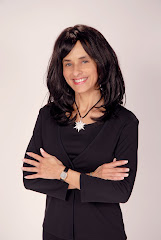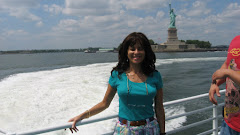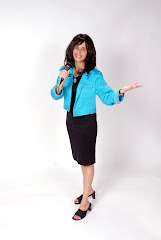

http://amlife.america.gov/amlife/diversity/american-indian-heritage-month.html
Washington — Each November, National American Indian Heritage Month pays tribute to the legacy of the American Indians and Alaska Natives — the first Americans — and celebrates their enduring contributions to the history and culture of the United States.
Today, there are nearly 5 million American Indians and Alaska Natives in the United States, or 1.6 percent of the total population, and this is expected to jump to 8.6 million, or 2 percent of the population, by 2050.
Washington — Each November, National American Indian Heritage Month pays tribute to the legacy of the American Indians and Alaska Natives — the first Americans — and celebrates their enduring contributions to the history and culture of the United States.
Today, there are nearly 5 million American Indians and Alaska Natives in the United States, or 1.6 percent of the total population, and this is expected to jump to 8.6 million, or 2 percent of the population, by 2050.
Most American Indians live in metropolitan areas and not on the 227,000 square kilometers of land held in trust for reservations. The states with the highest percentage of American Indians and Alaska Natives are Alaska (18 percent of its population), Oklahoma (11 percent) and New Mexico (10 percent).
There are 562 federally recognized Indian tribes in the United States. The largest, by far, are the Cherokee and Navajo nations, according to the 2000 U.S. census.
Navajo is the most widely spoken American Indian language, and almost one-fourth of Navajos speak a language other than English at home — the highest percentage of all tribes. Unfortunately, only one-half of the 300 or so native languages once spoken in North America still have any living speakers. (See “Navajo Textbook Aims to Preserve Language, Culture.”)
A recent study by the public opinion research organization Public Agenda found that non-Indians have little knowledge of the active, vibrant culture of American Indians today. There was a consensus among both Indians and non-Indians in the study about the need for more education on American Indian history and culture. (See “American Indians Seek Greater Understanding, Recognition.”)
The first U.S. state to set aside a day to recognize the importance of American Indians in the nation’s history was New York, in 1916. National American Indian Heritage Month was first designated in 1990 under a joint congressional resolution approved by President George H. W. Bush, the current president’s father.
Each year, the sitting president issues a proclamation, as did President George W. Bush this year.
THE CREATION OF AMERICAN INDIAN HERITAGE MONTH
The U.S. Department of the Interior’s Bureau of Indian Affairs provides some background on what has become an annual celebration of the culture and contributions of American Indians and Alaska Natives.
What started at the turn of the century as an effort to gain a day of recognition for the significant contributions the first Americans made to the establishment and growth of the United States has resulted in a whole month being designated for that purpose.
One of the very early proponents of an American Indian Day was Arthur C. Parker, a Seneca Indian, who was the director of the Museum of Arts and Science in Rochester, N ew York. He persuaded the Boy Scouts of America to set aside a day for the “First Americans” and for three years they adopted such a day. In 1915, the annual Congress of the American Indian Association meeting in Lawrence, Kansas, formally approved a plan concerning American Indian Day. It directed its president, Reverend Sherman Coolidge, an Arapahoe, to call on the country to observe such a day. Coolidge issued a proclamation on September 28, 1915, which declared the second Saturday of each May as an American Indian Day and contained the first formal appeal for recognition of Indians as citizens.
The year before this proclamation was issued, Red Fox James, a Blackfoot Indian, rode horseback from state to state seeking approval for a day to honor Indians. On December 14, 1915, he presented the endorsements of 24 state governments at the White House. There is no record, however, of such a national day being proclaimed.
The first American Indian Day in a state was declared on the second Saturday in May 1916 by New York Governor Charles S. Whitman. Several states celebrate the fourth Friday in September. In Illinois, for example, legislators enacted such a day in 1919. Several states designated Columbus Day as Native American Day, but it continues to be a day observed without any recognition as a national legal holiday.
In 1990, President George H.W. Bush approved a joint resolution designating November 1990 “National American Indian Heritage Month.” Similar proclamations have been issued each year since 1994.
See the U.S. Census Bureau Web site for a fact sheet on American Indian and Alaska Native Heritage Month and additional data on the American Indian and Alaska Native population.
Both the U.S. Library of Congress and the National Park Service have Web pages devoted to American Indian Heritage Month. The Library of Congress Veterans History Project includes a guide to American Indian and Alaska Native military veterans and interviews with former Navajo “code talkers” Keith Little and Merril Sandoval.
For more information, see “American Indian History, Culture” on America.gov and the Web site of the Department of Interior’s Bureau of Indian Affairs. The Web site of the U.S. Embassy in Berlin lists numerous information resources on Native Americans.
November 2008 Fact Sheet from US Census Bureau in PDF: http://www.census.gov/Press-Release/www/releases/archives/facts_for_features_special_editions/012782.html

















.jpg)
.jpg)



